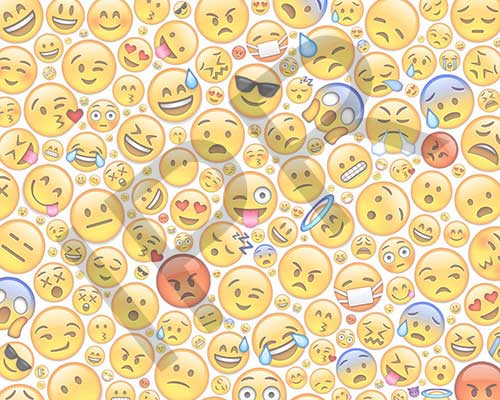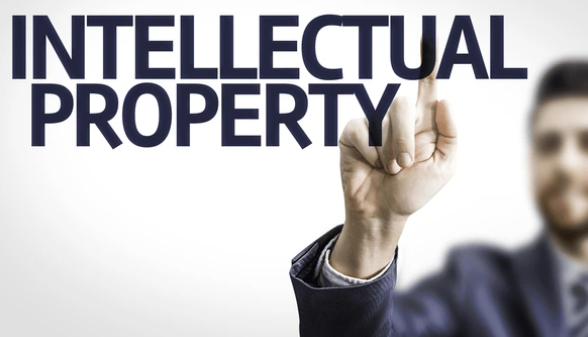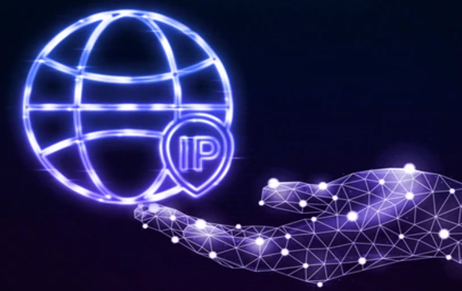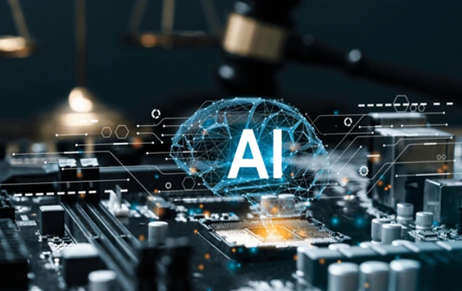The intellectual property (IP) licensing has gone a long way with the pace of technology…
Emoji and World of Intellectual Property
We live in a Gen-Z world, where conversations begin, emotions are expressed with emoji! With the rapid shift from a non-technological world to a world of techno-freaks, the importance of emoji has grown immensely and now, they form a part of the way of expression of human interaction.
Now, we may use an emoji in a casual sense and it may not look as complex it is, but the truth is, that it is capable of opening a realm of questions in terms of intellectual property. But the question is who could have, in the wildest of their imagination, thought of a co-relation between Intellectual Property and Emoji?
The article attempts to answer this question of the readers in the simplest way with the help of real-time examples.
The world of emoji was essentiality discovered in the mid-1990s by Shigetaka Kurita who developed a series of symbols that represent emotions and other abstract ideas, turned out to be 1000 symbols known as “emoji” in no time. It wasn’t long till these set of symbols were adopted by the leading tech-brand Apple in its keyboard and since then, its use has been unstoppable.
The Japanese word “emoji” literally translates to mean “picture letter” and represents emotions in the form of pictures or characters, easily identifiable and correlated by the human brain. Emoji may be further bifurcated into two parts:
(i) Unicode: The Unicode Consortium, a non-profit organization, provides a uniform standard for such assigning, so that data can be recognized in the same manner without corruption regardless of device, platform, or language, as opposed to previously, when the encodings used to conflict with each other. Recently, it has provided such uniform unique code numbers to approximately 2000 emoji which may be described as having an outline shape, with black and white colors along with a brief description regarding the same.
Despite this standardization as per the Unicode Consortium, emoji are usually represented differently, for example, a burger may have cheese either above or below it or the uniform code of pistol which is represented by Apple as a neon gun.
(ii) Proprietary: Proprietary emoji, unlike the former category, can only be accessed on certain platforms such as Twitter which includes NFL emoji hash-tags for game days or other branded emojis such as Kim Kardashian’s “Kimoji”.
Thus, when an emoji is sent by a user outside such platforms, it is displayed as a black square which indicates that the emoji only belong to a particular platform. A classic example of this may be that certain emojis of Apple are not visible when sent to an Android user primarily because of the difference in software and thus the platform.
However, the word emoji itself is not subject to protection awarded to intellectual property in general, but unlike the Indian Law, the US Law awards protection to emoji in certain cases. This may be explained by taking into consideration copyright, trademark as well as other intellectual property regimes.
-
Copyright Law
Under the Copyright Law, all emoji whether proprietary or Unicode-defined, may seem to be protectable subject-matter, however; it is not the case primarily because of two reasons, that is, first, the emoji may not be capable of satisfying the element of “expression” due to lack of originality, which is a prerequisite under the Copyright Law and second, emoji as the subject-matter of protection, are hit by the Merger Doctrine. Merger doctrine basically puts a restriction on the protection of such ideas which can only be expressed in a certain way or in a particular form as well as scenes-a-faire.
In the realm of copyright law the doctrine of merger postulates that were the idea and expression are inextricably connected, it would not possible to distinguish between two. In other words, the expression should be such that it is the idea, and vice-versa, resulting in an inseparable merger of the two. Applying this doctrine courts have refused to protect (through copyright) the expression of an idea, which can be expressed only in a very limited manner because doing so would confer a monopoly on the ideas themselves.
However, in the case of proprietary emoji, the chances of protection increase primarily because such platforms usually engage in creative judgment as well as variance.
-
Trademark Law
The basic requirement is that a mark shall be distinguishable, non-descriptive, and even not identical or similar to any existing trademark for any mark to be recognized by the Trademark Law. There may be the possibility of more than one person having trademark rights for various classes of goods in the same emoji. Communication-based platforms are however less likely in an emoji to gain trademark rights because they do not demonstrate the trademark ‘use in commerce’ requirement.
The first to receive an emoji trademark protection was Despair Inc. Here, the emoticons ‘:-(‘ in the USA were marked and protected. Smiley Co. has both copyright and trademark rights in more than 100 countries in relation to the ‘classic smiley.’
Another example of this may be a case wherein the year 2019, Marc Jacobs was sued by Nirvana, a clothing company, for violation of her mark. On their clothing line, Jacob had used a similar-looking emoji only in the place of the “X” of the eyes of the smiley with its M and J in each eye initials. Because of its distinctive creation and details, the Court ruled that Nirvana should be granted copyright and trademark protection. Therefore, emojis can easily be used by producers or marketing companies to satisfy the requirement “use in commerce” and thus trademarks can be secured without many obstacles.
-
Patent Law
Certain technologies are used to create, display or translate emojis that are patented to them. Similarly, Apple also possesses certain emoji-related patents in the USA via its user interface to enable rapid and efficient communication. Moreover, there are other similar examples that show that emoji itself is not patentable, but that the technology is certain.
Conclusion
Even though a decent protection is available to emojis under the intellectual property law regime, it is in my opinion, considering the ways in which emoji are used, that they should not be protected by copyright and should be released into the public domain. Emoji should be treated as an evolving language rather than intellectual property belonging to a person or entity under copyright law. The Gen-Z already use emoji in their communications, and encouraging the use of emoji as a “accessory” to language would best achieve copyright’s constitutional purpose of promoting the arts and sciences.
Author: Richa Bhandari- a student of the University of Petroleum and Energy Studies (Dehradun), currently an intern at IIPRD. In case of any queries please contact/write back to us at aishani@khuranaandkhurana.com.




